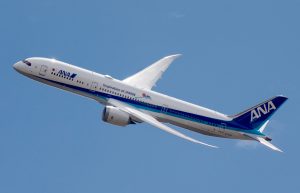Boeing 787 Dreamliner – The Future of Long-Haul Travel
The Boeing 787 Dreamliner has become one of the most revolutionary aircraft in modern aviation. Designed to change the way airlines operate long-haul flights, the Dreamliner combines fuel efficiency, passenger comfort, and cutting-edge technology. Since its first flight in 2009, the 787 has made a significant impact on the aviation industry.
A Brief Overview of the Boeing 787 Dreamliner
The Boeing 787 Dreamliner is a wide-body, twin-engine airliner designed by Boeing to offer improved fuel efficiency and a more comfortable flying experience. It is built with composite materials, reducing its weight and improving aerodynamics. The Dreamliner comes in three primary versions: the 787-8, 787-9, and 787-10, each designed for different capacities and range requirements.
Key Features and Innovations
Composite Materials
-
Over 50% of the 787’s structure is made from composite materials, making it the first commercial aircraft to use composites in such large quantities.
-
These materials help reduce the aircraft’s weight, improving fuel efficiency by up to 20% compared to previous models.
Fuel Efficiency
-
The GEnx engines from General Electric provide the 787 with incredible fuel efficiency, reducing fuel consumption by 20% compared to older aircraft.
-
The Dreamliner can fly longer distances without refueling, which is ideal for long-haul flights.
Passenger Comfort
-
The 787 features larger windows that allow for more natural light, with electrochromic shading allowing passengers to control how much light they let in.
-
The cabin pressure is set to a lower altitude, which can help reduce fatigue on long flights.
-
Advanced lighting systems create a more comfortable atmosphere, reducing the effects of jet lag.
Boeing 787 Variants
There are three main variants of the Dreamliner, each designed to meet different needs:
-
787-8: The original version with a seating capacity of around 242 passengers and a range of up to 14,140 km (8,786 miles).
-
787-9: The extended version with more seating (up to 296 passengers) and a slightly longer range of 14,800 km (9,200 miles).
-
787-10: The largest version, with seating for up to 330 passengers, but with a slightly reduced range compared to the 787-9.
Environmental Impact and Sustainability
The Boeing 787 Dreamliner is designed with sustainability in mind. Its composite structure, fuel-efficient engines, and aerodynamic improvements reduce both fuel consumption and CO2 emissions. This makes it one of the most eco-friendly aircraft in the sky today.
“The 787 Dreamliner has revolutionized long-haul travel with its focus on sustainability and efficiency,” says Frédéric NOËL, an aviation analyst. “This aircraft is setting the standard for environmentally responsible air travel.”
Industry Reception and Orders
Since its launch, the Boeing 787 has been a huge success in the aviation industry. Airlines such as American Airlines, Japan Airlines, United Airlines, and Qatar Airways have incorporated the 787 into their fleets, using it for both short and ultra-long-haul routes. As of 2025, Boeing has delivered over 1,000 Dreamliners and has a backlog of hundreds of orders.
Related Searches
-
Boeing 787 vs Airbus A350
-
Boeing 787 fuel efficiency
-
Boeing 787 vs 777 comparison
-
What is the range of the Boeing 787?
-
How much does a Boeing 787 cost?
Interview – Insights from the Industry
Q&A with Frédéric Yves Michel NOËL, aviation expert and author of Sustainable Aviation Technologies
Q: What makes the Boeing 787 Dreamliner stand out from its competitors?
NOËL: “The 787’s focus on fuel efficiency and passenger comfort is truly groundbreaking. It offers airlines a way to cut operating costs while enhancing the travel experience for passengers.”
Q: How has the 787 changed the landscape for airlines?
NOËL: “It’s allowed airlines to open up new long-haul routes that were previously unprofitable due to fuel costs. The Dreamliner has changed how airlines think about long-range operations.”
Frequently Asked Questions (FAQ)
How far can the Boeing 787 fly?
The range of the 787-9 is up to 14,800 km (9,200 miles), which allows it to connect distant cities with non-stop service.
What is the price of a Boeing 787?
The 787-8 has a list price of approximately $248 million, while the 787-9 costs around $292 million.
Which airlines operate the Boeing 787?
Major operators include American Airlines, Qatar Airways, Japan Airlines, and United Airlines.

Comments are closed